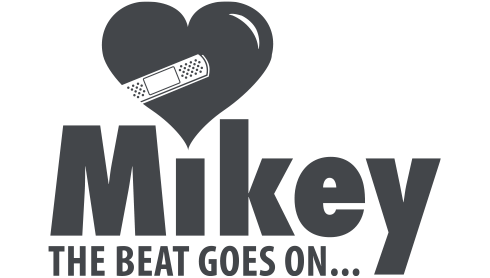We often get questions about our MIKEYs – who should use them, when they should be used, how they work, and more. Last week, we received a wonderful photo of a student checking a MIKEY defibrillator at the University of Waterloo, which made us think that we should share a list of things everyone should know about using a MIKEY AED.
Below is a list of questions and answers that we often get about our MIKEY defibrillators as well as some tools on how to properly check and test them.
MIKEY Tips and Tools
How Often Should I Check To Make Sure my Mikey Defibrillator is Working?
You should be checking to make sure that your MIKEY defibrillator is working at least once a month. This is essential to ensure that your MIKEY is in working order and is ready to save a life if the need should arise.
To check if it is, use our monthly check up manual available in the link below.
The Mikey Network Monthly Maintenance Manual
Who Can Use a MIKEY?
Anyone can use a MIKEY. Yes, even you. You don’t have to be a medical professional to use a MIKEY and save a life! Just follow along to the instructions. It’s safe and easy for anyone to use.
When should I use a MIKEY in an Emergency?
When someone experiences sudden cardiac arrest (SCA) in a public place, the most critical actions a bystander can take are to call 9-1-1, and deliver cardio-pulmonary resuscitation (CPR) to provide blood flow to the heart and brain. One person can do this while another runs to look for a nearby MIKEY (AED). Once they return with an AED, you can start preparing to operate a charge.
Does an AED Always Deliver a Shock?
The MIKEY automatically assesses the situation and diagnoses if there are potentially life-threatening heart rhythms. If, and only if, the AED detects a problem that may respond positively to an electric shock, it permits a shock to be delivered to restore a normal heart rhythm.
What If I don’t Know the Steps to Use an AED?
The MIKEY gives simple audio instructions designed for ordinary people. You just open the case and follow the instructions that are delivered through voice prompts. Some MIKEYs automatically provide a shock and some require you to push a button. The MIKEY will tell you when and if you should push the button to deliver a shock.
Can I be Sued if Something Goes Wrong?
Did you know it’s impossible to be sued for using a MIKEY to help someone? Every province has legislation protecting bystanders from lawsuits when they are only trying their best to help someone in an emergency – even if something goes wrong.
Need to find a MIKEY? We have placed over 2000 MIKEY’s all over the world, see where the nearest one is to you.
With the rising temperatures across Canada, government agencies have been sending out warnings to citizens about the risk of extreme heat.
This heat has largely affected the areas of Southern Ontario, Quebec and the East Coast. With 15 deaths in Quebec already this summer, now more than ever is a good time to know how to prepare yourself against the extreme heat.
Most Canadians think that extreme heat can only affect the elderly, but often it can affect people who are suffering from illnesses, and those with heart conditions. We’ve created a list of criteria to follow that you can use to prepare yourself and your loved ones for the heat of the summer.
How to prepare for the extreme heat
Preparing for a heat wave
- Find areas or ways to keep cool in your home when it’s hot out. This can be as simple as setting up your home with air conditioning or fans.
- Plan out your day, and know about places that are cool. Most public buildings, malls, and offices offer air conditioning during the day.
- Discuss heat safety precautions with members of your household. Have a plan for wherever you spend time – home, work and school – and prepare for the possibility of power outages.
- Make sure to have a plan for your pets as well as your family and make sure that their needs are met. Depending on how shaggy your pets are, they can get pretty hot on summer days.
- Get trained in first aid, so that you’re able to recognize and respond to emergencies in the heat. The Mikey Young at Heart app is a great tool on the basics of first aid, and how to use an AED, but if you want a full accreditation we recommend reaching out to your local municipality or St.John’s ambulance.
During a Heat Wave
- Drink plenty of cool fluids. It’s important to keep drinking plenty of fluids throughout the day as you want to remain hydrated throughout.
- If you can, aim to avoid being outside at the hotter portions of the day. If you can’t, make sure to take regular breaks in a shaded area.
- Know the humidex rating – it combines the temperature and humidity to indicate how hot the weather feels to the average person.
- Dress for the heat and for your activity level. Wear light, loose clothing to let air circulate and heat escape.
- Always wear a hat and apply sunscreen before going outside.
- Slow down your activities as it gets hotter. Don’t work, exercise, or play outside for an extended period of time. Take frequent breaks if you must work outdoors to let your body cool off.
- Avoid caffeine and alcohol because they can cause dehydration, which stops your body from controlling its temperature properly.
Symptoms to look out for:
- Dizziness or fainting
- Nausea or vomiting
- Rapid breathing and heartbeat
- Extreme thirst
- Decreased urination with unusually dark yellow urine
- Changes of behaviour in children
Things that you can do to help others
- Bring extra supplies with you that you can give away to friends or to someone in need, like a bottle of water. This is extremely helpful when you’re planning to go out for a day at the park or another public area.
- Check in on neighbours, family members, and friends who you know don’t have air conditioning, are older, or have illnesses. Bring them a care package of water, and spend time with them to make sure that they’re alright.
- Share on social media or other online platforms the location of cooldown centres, or water stations in your area.
For this list, we referenced an advisory from the Red Cross. If you need more advice on heat waves or an understanding of how to respond to different emergencies, we recommend using their site as it has many great resources.
Every year the Mikey Network helps to organize a team for the Walk Of Life. The annual event which you can do as a walk or a run is a wonderful way to spend your Saturday. There are tons of fun events that you can do with your family and all of the money that is raised by the Mikey Network’s team goes towards educational programs that advocate for heart health or placements of defibrillators to families or organizations.
Heart Health Education
As we lead up to the walk, we want to let those that have supported us see where their donations have gone. This week we’re talking about Heart Health Education and the Mikey Young At Heart app, which helps teach high school students how to perform CPR and use a defibrillator. The students can then use the time that they have spent learning these life-saving skills, towards their educational volunteer hours.
Although the app is primarily geared towards high school students, it’s available for everyone to use.
To inform students about heart health and the app, we’ll often send out members of our team to schools in the Greater Toronto area. They’ll perform demonstrations on how to use a defibrillator while talking about the benefits of the app. Below are shots of our team explaining how a defibrillator works, last year, at the Castlebrooke Secondary School.
If you would like to learn more about the Mikey Young at Heart app, please follow the link. If you would like us to come to your school to talk about heart health and the MYAH app, please contact us at info@mikeynetwork.com
Exercising regularly is an important part of retaining a heart-healthy lifestyle. Performing physical activity helps you to live longer and allows your body to run and perform better in the long-term. It’s advised that everyone should be performing 150 minutes of exercise a week to maintain a heart-healthy lifestyle.
Uncertainty is what often faces those who are looking to get back into a regular work out routine though. How and where do you start when you haven’t worked out in months? Or even years? Alternatively, returning to a regular workout routine after a physical injury or a medical condition can be that much harder as you need to compensate for that new ailment.
Although beginning again can be a daunting task, it’s recommended that doing some activity is far better than doing nothing at all, as there is almost no disease that doesn’t benefit from exercise in some way.
Seek out a physician before you begin
Although we encourage you to exercise, we strongly recommend that before you do anything; you contact your physician to see what they recommend. This is recommended if you haven’t exercised in a year or so, or you’re recovering from an injury or health-related ailment. If you have simply taken off some time between seasons, you’re less likely to need to see your doctor.
For those that do see their doctor, they’ll be able to understand your level of recovery and fitness level better than anyone else, and will be able to provide you with a detailed plan to begin exercising again.
Here are some questions that you should ask when you go to meet your doctor:
- How much exercise can I do?
- How often can I exercise?
- What types of exercises should I do?
- What activities should I avoid?
- Should I hire a personal trainer to exercise with me?
After you have met with your doctor, they may recommend that you should go through a rehabilitation program to teach you how to safely become more active.
If you have recently suffered a heart attack or a cardiac arrest you can find a cardiac rehab program in any province at cardiachealth.ca.
General workout tips
- Focus on doing aerobic exercises when you begin working out again, rather than more complex movements like isometric exercises (pushups). Aerobic exercises are easier to perform and will help to make your heart stronger, while isometric could strain your muscles. Popular aerobic exercises include running, walking, and swimming.
- Try to organize your exercises with friends, family, or by joining a group at a local gym. Going with another person (or group), even if you both haven’t been as active, can be a great motivator to keep exercise as a regular part of your routine. Additionally, many workout facilities have personal trainers that can help you to create your own workout program for free, the YMCA is one of note.
- Make sure that you stay hydrated. It is important to drink water even before you feel thirsty, especially on hot days.
- Go at your own pace. For many people returning back to a regular workout routine, it’s normal to feel some self-consciousness. Just make sure to do what feels comfortable to you and to keep progressing.
If you have some workout tips, please let us know in our comments or message us on Facebook or Twitter.
Copyright © 2003-2025, The Mikey Network. All Rights Reserved.
Privacy Policy

















